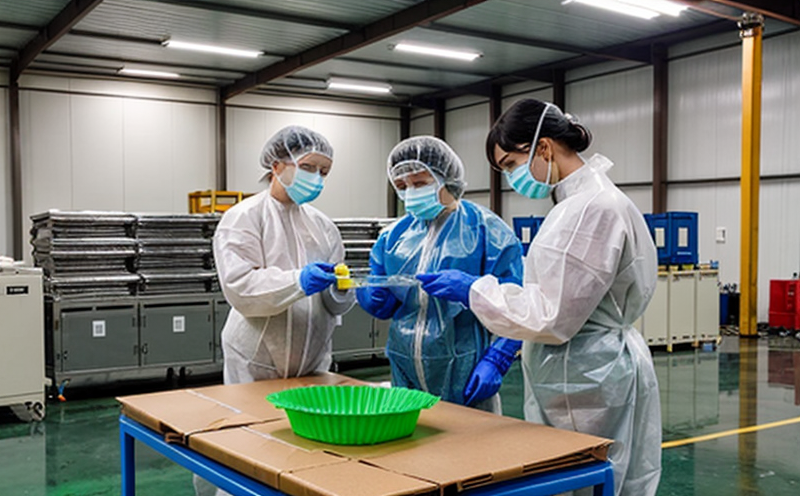ISO 75-5 Heat Deflection Testing for Containers
The ISO 75-5 heat deflection testing standard is a critical procedure used to evaluate the thermal mechanical properties of thermoplastic materials, including containers and packaging. This test assesses how plastic materials deform under applied load at specified temperatures. The test helps manufacturers ensure that their products meet safety standards and perform reliably in various environments.
During ISO 75-5 testing, a sample is placed on a heated platform with a constant load applied until it deflects by a specific distance. This deflection value determines the heat deflection temperature (HDT), which indicates how well the material can withstand high temperatures without deforming or breaking.
The test is essential in industries such as packaging, automotive, and electronics where materials must maintain structural integrity under thermal stress. For containers, this testing ensures that they will not warp or collapse during shipping or storage at elevated temperatures.
Understanding the heat deflection temperature of plastic containers is crucial because it affects many aspects:
- Product durability: Higher HDT means better resistance to deformation in hot environments.
- Safety: Ensures that packaging does not melt, crack, or warp during transportation and handling.
- Regulatory compliance: Many standards require materials to meet specific HDT thresholds.
The ISO 75-5 test is widely used because it provides a consistent method for comparing different materials. This standardization ensures that manufacturers can reliably compare the thermal properties of various plastics and make informed decisions about material selection.
For quality managers, this testing is crucial in ensuring product consistency. Compliance officers rely on ISO 75-5 to verify adherence to industry standards. R&D engineers use it to innovate materials that meet both performance and regulatory requirements. Procurement teams can leverage the results of these tests to source materials that are reliable and cost-effective.
The procedure involves several steps:
- Selecting appropriate samples representative of the product.
- Calibrating the testing machine according to ISO 75-5 specifications.
- Placing the sample on a heated platform with a specified load.
- Monitoring the deflection until it reaches the predetermined threshold.
- Determining and recording the heat deflection temperature.
The results of this testing are reported in degrees Celsius, providing clear, quantifiable data that can be used for decision-making. Understanding these values allows stakeholders to make informed choices about material selection and product design, ultimately leading to safer and more reliable products.
In summary, ISO 75-5 heat deflection testing is a vital tool in the quality control process of plastic packaging materials. It ensures that containers can withstand high temperatures without deforming, which is essential for maintaining structural integrity during transportation and use. This standard plays a crucial role in the design and development of products across various industries.





